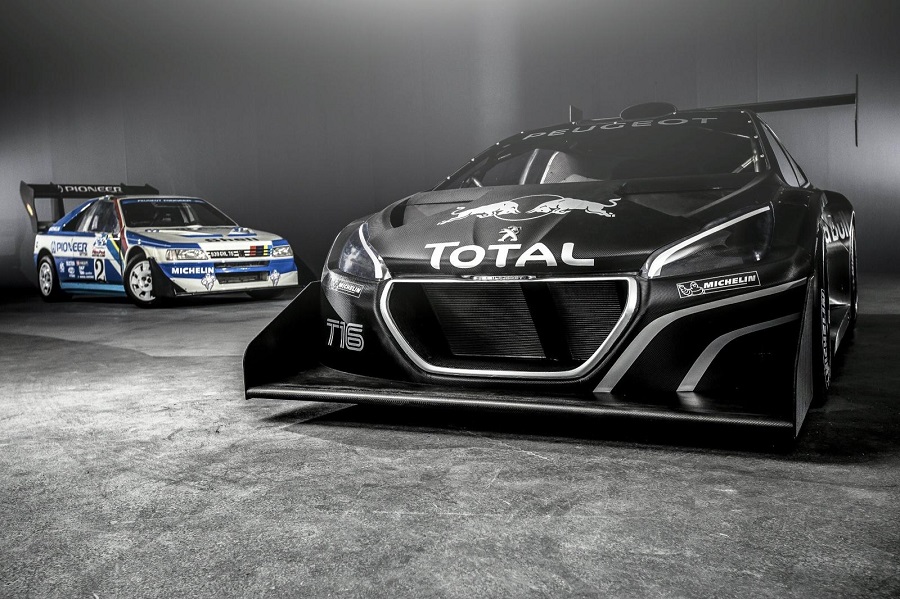The 2023 edition of the world’s greatest hill climb is now underway, so what better excuse to check out some of the best Pikes Peak cars of all time.
Over the years, the competitive Pikes Peak hill climb has given us some of the wildest, most creative modified cars. So, as we look towards this year’s showdown, we’ve gone back through history to look at the coolest, most bonkers monsters to ever scale the famous Colorado mountain.
Before, we get into that though, we should probably give you a little background information, in case this whole hill climb thing is new to you…
What Is Pikes Peak?
Held since 1916, the Pikes Peak hill climb is a car race with one simple aim: get to the summit of Pikes Peak quicker than anybody else. Originally, Spencer Penrose initiated the event as a way of drawing visitors to the newly-built Pikes Peak Highway, hoping to promote trade at the surrounding settlements that the road serviced.
However, even he couldn’t predict the initiative’s success. In fact, the annual time trial proved so popular that it has outlasted Penrose himself, only pausing during the two World Wars. As such, it’s the USA’s second-oldest motorsport event, and these days attracts the gaze of an international audience.
Given its stature within the automotive landscape, Pikes Peak has become an annual pilgrimage for car manufacturers and tuning houses alike, each arriving with the aim of outshining each other with faster, crazier machines. Not that we’re complaining…
Anyway, now that you’re up to speed, here’s a selection of the best Pikes Peak cars we could think of:
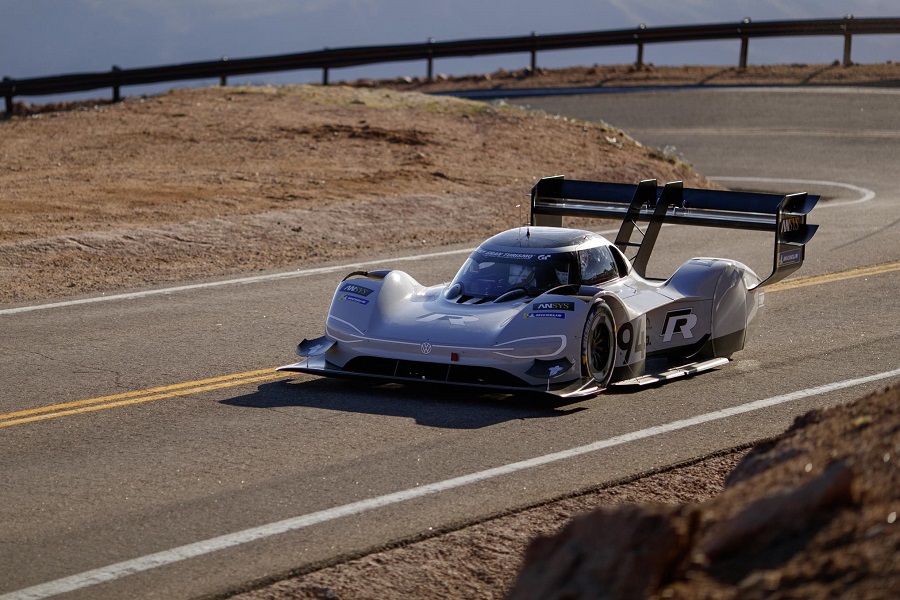
Volkswagen ID.R
We’re starting off with one of the big guns. You’ll almost certainly have seen the Volkswagen ID.R online at some point. Designed to promote VW’s upcoming (now current) range of ID electric vehicles, the ID.R was special.
Debuting in 2018, VW created the ID.R with the intention of merely breaking the record time for an electric car. However, when legendary French racing driver Romain Dumas planted himself into the driver’s seat, it wasn’t just the electric record that came tumbling down, but the overall record too. In fact, the Volkswagen ID.R was the first car to ever climb Pikes Peak in less than eight minutes; 7:57.148 to be precise.
After that resounding success, the ID.R had a few more competitive outings, namely at Goodwood and the Nürburgring Nordschleife. Remarkably, it also smashed the hill climb/lap record at both those venues too.
How is it so fast? Well, the ID.R makes use of two electric motors which send a combined 680hp to the wheels instantly. Not insane by modern standards, but when you consider that its extreme aero was designed by performance specialists, Norma, and that it weighs just 2500lbs (1100kg), things start to make a bit more sense. To give you an idea of just how rapid this thing is, 60mph arrives in an eye-watering 2.25 seconds from a stand still.
Sadly, Volkswagen ceased its motorsport operations at the start of the new decade, so for now, the ID.R is enjoying a blissful retirement at the top of time charts all around the world.
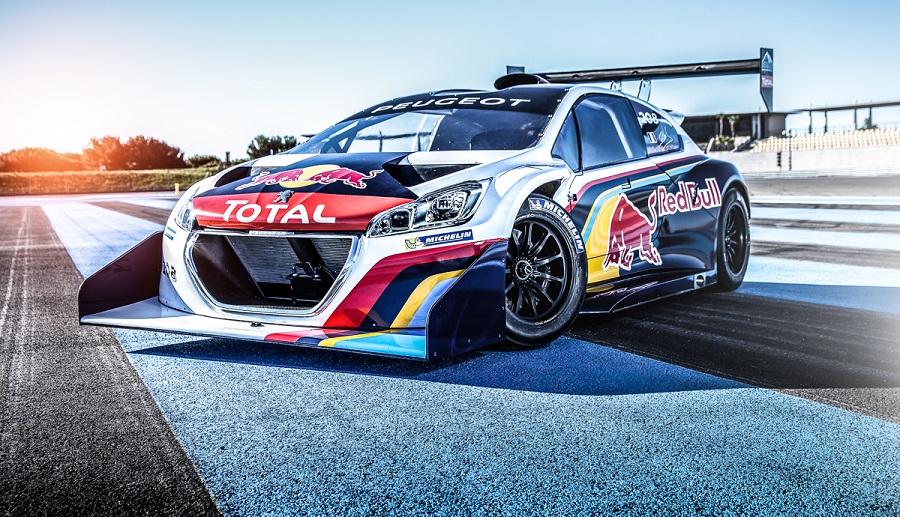
Peugeot 208 T16 Pikes Peak
Before Dumas and his ID.R, the outright Pikes Peak hill climb record was owned for half a decade by another French motorsport legend: Sébastien Loeb.
Loeb has won the FIA World Rally Championship nine times – a feat that nobody else in history has been able to match. So, when Peugeot decided to take on the ‘Race to the Clouds’ with their bespoke 208 T16, he stood out as the obvious choice as the man to put behind the wheel.
Anyway, a special driver still needs a special car, and Peugeot certainly served Loeb up with a good one. Boasting 875bhp from its 3.2-liter V6 and weighing just 875kg, the 208 T16 Pikes Peak had a power-to-weigh ratio of 1016bhp/ton. For context, that’s double the force of a Bugatti Veyron.
The rest of its specs are just as staggering. 0-62mph is achieved in just 1.8 seconds, and – as you might expect – its running gear bears no resemblance to your average 208. Instead, it’s crammed full of the same chassis parts used in Peugeot’s Le Mans-winning 908 HDI prototype!
The result of their 2013 attempt was a new record of 8:13.878 minutes, shattering the previous benchmark by more than a minute. Bonkers…

Audi Quattro S1 Pikes Peak
If you’re a scholar of rallying, you’ll know that the Group B cars of the 1980s were outright lethal at the best of times. However, that didn’t stop Audi pushing its revolutionary S1 Quattro even further when the time came to take on Pikes Peak.
Using the maniacal rally car as a base, Audi lowered its kerb weight to a mere 2200lbs (998kg) and then shifted the mass to create an almost perfect 50:50 distribution. As for aero devices, the S1 was given a more aggressive rake, while the bodywork became outright outlandish – even incorporating a double-stacked rear wing.
The turbocharger under its hood was also far larger than the one you’d find in the Quattro’s WRC counterpart, resulting in an output of around 750hp from its five-cylinder engine. Walter Röhrl would go on to wrestle the car up the mountain in 10:47.850 minutes, which at the time (1987) also happened to be the quickest that anyone had ever managed. Afterwards, he described the accelerator as being like an ‘on/off switch’. Sounds pretty sketchy…
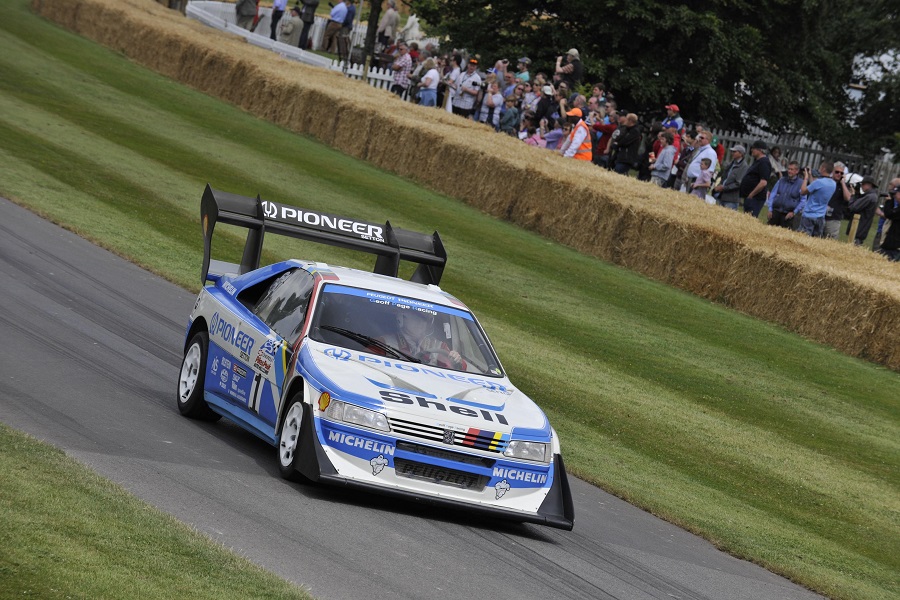
Peugeot 405 T16 GR Pikes Peak
Even prior to their success with Loeb and the 208, Peugeot had a rich history of competing at Pikes Peak. It all started in the ’80s Group B era. Having battled hard with Audi on the WRC stage, Peugeot modified its 205 rally car to continue the feud against the S1 Quattro on the mountain. This time though, the French brand lost out to the German one, but that didn’t stop Peugeot from returning to Pikes Peak even after Audi had moved on.
See, Peugeot’s main gripe with its 205 in this context was the wheelbase. Inwardly, they understood that the 205 was realistically just too short to be truly competitive on the Pikes Peak layout. Happily, the longer 405 sedan was just about to enter production in the late 1980s, giving Peugeot Talbot Sport the perfect new platform (and marketing excuse) to give Pikes Peak another go.
In the end, their efforts were rewarded. In 1988, Ari Vatanen clocked a time of 10:47.220 – enough to eclipse Röhrl’s attempt with Audi from the previous year by less than a second. Then, Robby Unser would go on to make it back-to-back Pikes Peak victories for the 405, when he too claimed a win with the car 12 months later.
For many, the 405 T16 is perhaps one of the most recognizable Pikes Peak cars of all time; something no doubt aided by Jean-Louis Mourey’s short movie, ‘Climb Dance’, which showcases Vatanen’s run up the hill. Even if you’ve not knowingly seen that film, it’s highly likely that you’ll have seen clips from it used elsewhere, such is its prominence.
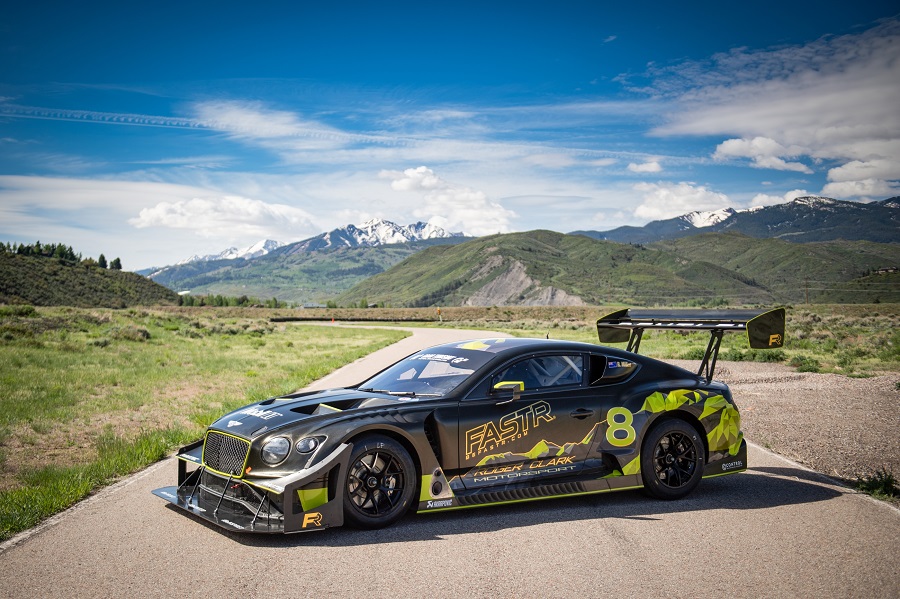
Bentley Continental Pikes Peak
Comfort, elegance, sophistication. These are the sort of words that spring to mind when someone mentions the name, ‘Bentley’. So, you might be wondering why they decided to fit a Continental with a very *un* sophisticated body kit and fling it up a mountain…
Well, weirdly, the answer is sustainability. See, this Conti is part of a wider Bentley research and development program, designed to get a better understanding of renewable fuels. As is becoming increasingly common these days, Bentley acknowledges that a more environmentally-friendly future won’t be solely built on electrification. As such, they hope that renewable combustion fuels will act as a second strand to the solution, resulting in various test mule creations such as this.
The car itself is actually based on one of Bentley’s old GT3 race cars, rather than a stock roadgoing Continental. So, from the off, it was a serious bit of kit. However, in order to tackle the grueling hill climb, Bentley upped the power of its 4.4-liter V8 to 750hp. To achieve this, the pistons and conrods were strengthened, and a pair of massively upscaled turbos were added, complete with an external wastegate venting into side-exit screamer pipes. How very un-Bentley.
Handling wise, this big old barge has got 30% more downforce than a regular Continental GT3 racer, and both front and rear axles run significantly reduced camber to aid the car’s low-speed cornering performance. Perhaps surprisingly, this beast is also running on the softest springs and anti-roll bars that Bentley had access to. Usually, that’d be counterintuitive with a performance car, but Bentley hoped to give this Pikes Peak racer *more* body roll, supposedly to utilize the onset of weight transfer under braking. There’s one for you car setup wizards to ponder…
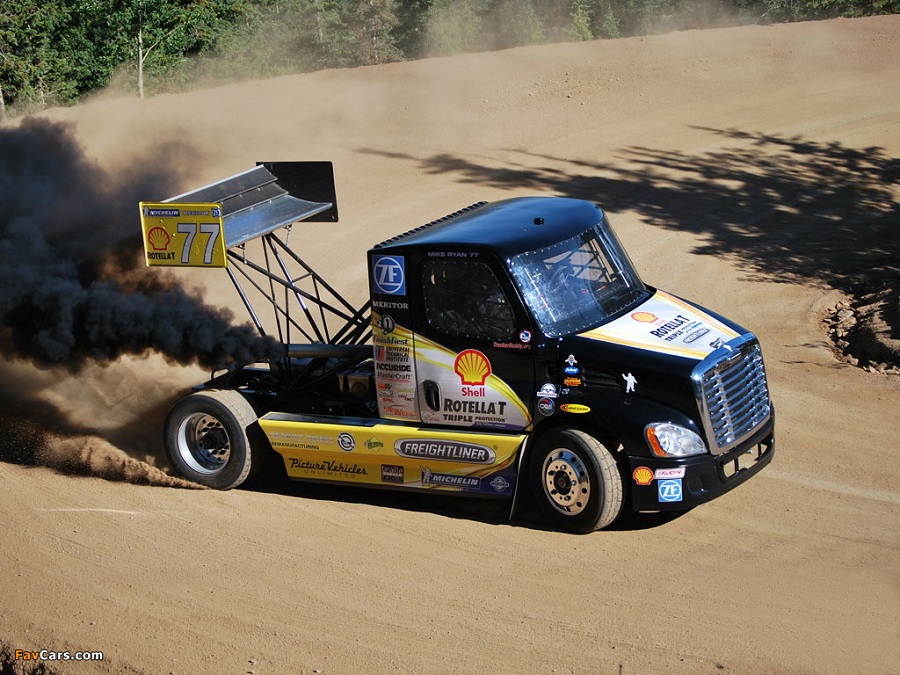
Banks Power Freightliner Cascadia
Alright, this one’s technically not a car per se, but it’s still epic so we reckon it’s allowed a seat at the table.
Built by American diesel specialists, Banks Power, this Freightliner Cascadia churns out a whopping 2400hp and 4000lb ft of torque! Oh, and if that wasn’t enough, there’s also 400hp worth of water & meth injection on tap if you decide you need a bit more oomph on the straights.
Naturally, under the hood this is no regular Cascadia. It’s powered by a 14-liter Detroit Diesel Series 60 engine, accompanied by an ECU from the same tuning shop. Banks then added their own ‘Super Turbo’ system, which is comprised of a three-filter ram air intake, 8.3-liter whipple twin-screw supercharger, S510 Borg Warner turbocharger, and finally some Tial wastegates and blow-off valves. A five speed ZF automatic transmission and Meritor differential then has the difficult task of sending all that power to the wheels.
Truth be told, everywhere you look around this truck, there’s a cool little detail. The modified cab, for example, is partially built from the bodywork of a bi-plane, while the rear wing is a modified version of the sort of aero equipment that they were running in Champ Car racing back in the ’90s.
While this is certainly an independent effort, it’s clear that Freightliner gave the project their blessing. In fact, a team of Freightliner engineers volunteered to construct the core chassis and roll cage.

Hoonipigasus
On the opposite end of the build spectrum, there’s this. The ‘Hoonipigasus’ is based on the much more svelte Porsche 912, and was constructed by BBi Autosport on behalf on the late Ken Block’s Hoonigan division.
Featuring a livery that harks back to Porsche’s iconic ‘pink pig’ Le Mans colors, this 1966 912 (no, we don’t mean 911 – Google it) has had its heart surgically torn out and replaced by a bespoke twin-turbo 4.0-liter flat six. The result? 1400 horsepower.
Those ponies are then sent to all four corners of the car through a custom AWD system, and in a package that weighs just 2200lbs (1000kg), these ingredients should translate into a truly mind-bending set of performance stats. However, don’t make the mistake of thinking that this 912 has been built to just ‘brute force’ its way up the mountain either. One cool little feature is how its suspension adjusts based upon GPS readings. Essentially, using telemetry from BBi’s previous runs up the course, the Hoonipigasus can automatically raise or lower its suspension for optimal performance at every specific part of the road on its way up.
Unfortunately, we never quite got to find out how all that theory translated into reality. The engine blew up during testing at the 2022 edition of Pikes Peak, and tragically, Block himself passed away before being able to give it another go in 2023. However, in his honor, Ken’s 16-year-old daughter Lia has driven the car up the mountain pass in an emotional untimed exhibition run. She’s also set to compete in Ken’s Escort Cosworth V2 in an ARA event.

Suzuki V6 Escudo Pikes Peak Special
Here’s one for the Gran Turismo generation.
Over the years, Suzuki has given us some downright bonkers Pikes Peak cars. Their most recent build (very loosely based on the SX4) is my personal favorite, however its the old Escudo which strikes a chord with most people.
Why? Well, it’s one of many obscure Japanese cars to gain niche stardom from the Gran Turismo video game series, and thankfully, the reality of the Escudo Pikes Peak does match up to its cultural legend.
Designed to promote the off-road prowess of Suzuki’s small SUV range, this be-winged 90s silhouette racer came packing just shy of 1000hp thanks to its mid-positioned and highly-modified twin-turbo V6. The cartoon-esque aero package was therefore as necessary as it was awesome, and in the end, the Escudo would make it up to the summit in a time of 10 minutes 21 seconds. Impressive, but not quite record-breaking.
Suzuki and their chosen driver Nobuhiro Tajima would eventually go on to claim the outright record with the SX4 at the start of the 2010s, but it wasn’t long before Peugeot returned to steal the limelight…

